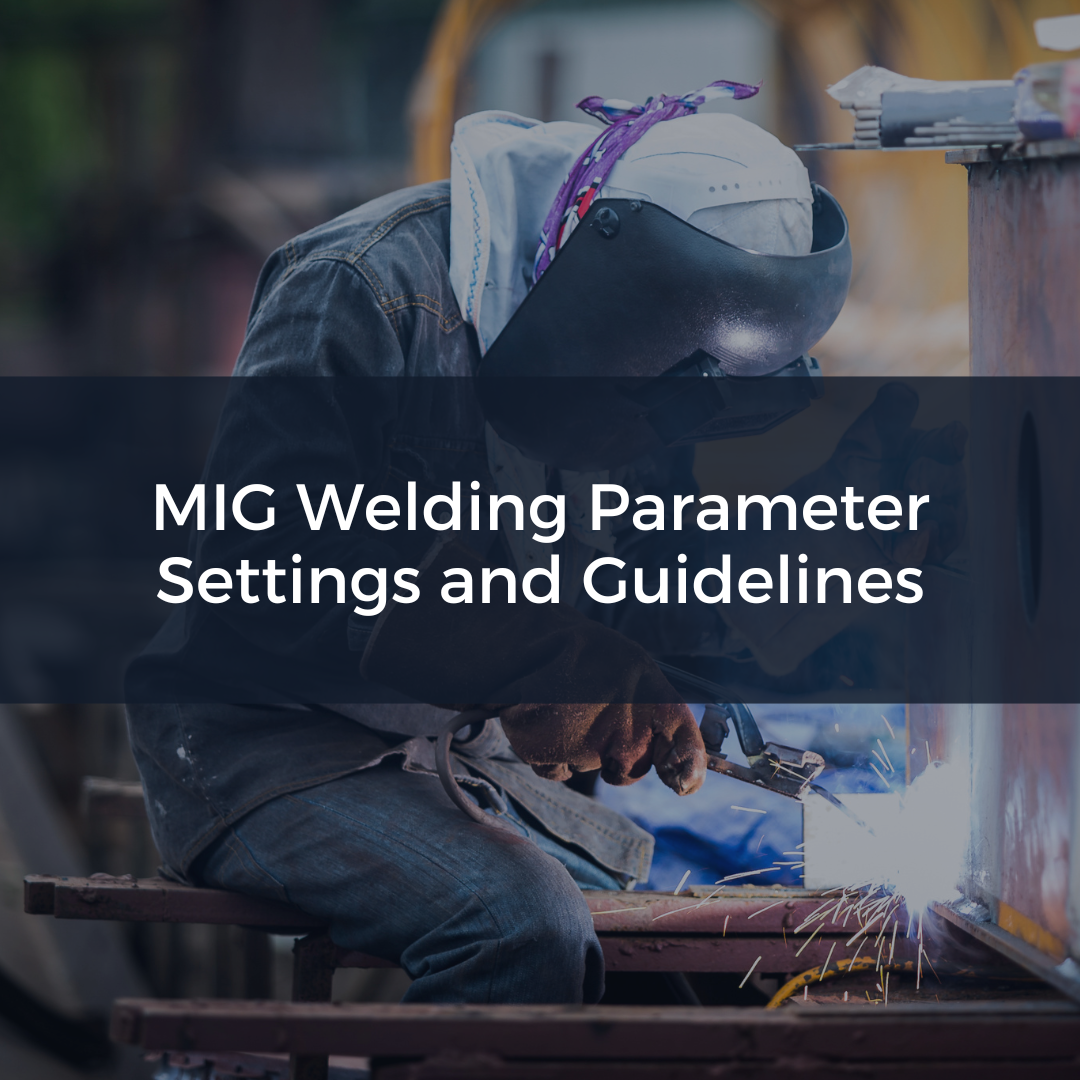Mastering MIG Welding: Comprehensive Welding Parameter Guidelines and Settings
Introduction
Welcome to your ultimate guide to mastering MIG welding with your Pinnacle MIGARC or ProMIG Welding Inverter. Whether you're new to MIG welding or looking to refine your skills, this guide provides essential parameters and settings to help you achieve perfect welds every time.
Understanding Welding Gases
CO2 Gas Benefits:
- Economical option.
- Offers deeper penetration on steel.
- May be too intense for thinner metals.
75% Argon, 25% CO2, Preferred for Thin Steels:
- Ideal for thin steels.
- Produces less spatter.
- Improves bead appearance.
Key Points:
- Both gases are best used indoors, away from wind.
- For auto body manufacturing and fabrication, 75/25 Argon/CO2 is recommended.
- Gasless Flux Core is ideal for structural welding but unsuitable for materials thinner than 1.6 mm.
Essential Welding Controls
Amperage/Current Control:
- Regulates wire speed and heat.
- Influences weld penetration and filler transfer.
Voltage Control:
- Adjusts the frequency of the weld.
- Higher voltage creates a wider weld pool.
Gas Flow:
- Typically set between 15-20 CFM.
- Varies based on welding material and thickness.
Inductance Control:
- Used in Flux Core welding and TIG welding on multi-process machines.
- Not critical for beginners but useful for advanced control.
Factors Affecting Welding Parameters
Numerous factors can influence your welding parameters, including:
- Welder's hand speed
- Material contamination
- Gas quality
These guidelines are designed to help you understand and control your welding process better.
Setting MIG Welding Parameters
Step 1: Determine Material Thickness
- Adjust the amperage according to the material thickness.
- Use the following chart for reference.
Mild Steel Gas Welding Parameters
| Material Thickness (mm) | Wire Diameter (mm) | Voltage (V) | Current (A) |
|---|---|---|---|
| 0.5 | 0.6 | 15–17 | 20–30 |
| 1.0 | 0.6 - 0.8 | 16–18 | 30 to 40 |
| 1.5 | 0.6 - 0.8 | 17–19 | 35–50 |
| 2.0 | 0.8 - 1.0 | 18–20 | 40 to 90 |
| 2.5 | 0.8 - 1.0 | 19–21 | 50 - 100 |
| 3.0 | 0.8 - 1.2 | 20 - 22 | 90 to 120 |
| 3.5 | 0.8 - 1.2 | 21–23 | 100 - 130 |
| 4.0 | 0.8 - 1.2 | 22–24 | 120 to 150 |
| 4.5 | 0.8 - 1.2 | 23–25 | 140–170 |
| 5.0 | 0.8 - 1.2 | 24–26 | 150 - 180 |
| 5.5 | 0.8 - 1.2 | 25 - 27 | 160 - 190 |
| 6.0 | 0.8 - 1.2 | 26 - 28 | 180 - 210 |
Fine-Tuning Your Settings
-
Amperage:
- Essential for determining the heat and penetration.
- Use the chart to set a starting point based on material thickness.
-
Voltage:
- Influences the bead's width and the arc's stability.
- Adjust by welding on scrap metal and fine-tuning based on the arc's behavior.
Common Welding Issues and Solutions
Wire Speed & Current Too Low:

- Narrow convex bead with no tie-in at the toes.
- Solution: Increase wire speed and current to ensure better penetration and tie-in.
Wire Speed & Current Too High:

- Poor ARC starts, excessive spatter, and wide weld beads.
- Solution: Decrease wire speed and current for more controlled starts and consistent bead width.
Voltage Too Low:

- Poor tie-in at the toes and a convex bead profile.
- Solution: Increase voltage to improve tie-in and achieve a flatter bead profile.
Voltage Too High:

- Inconsistent penetration and a turbulent weld pool.
- Solution: Decrease voltage for a more stable arc and consistent penetration.
Hand speed is too fast:

- a narrow, convex bead with inadequate penetration.
- Solution: Slow down travel speed to allow proper penetration and bead formation.
Hand speed is too slow:

- Excessively wide bead with poor penetration and potential burn-through.
- Solution: Increase travel speed to avoid excessive heat buildup and ensure a narrower, more controlled bead.
Insufficient shielding gas:

- Porosity and pinholes in the weld.
- Solution: Ensure adequate gas flow to protect the weld pool from contamination.
Ideal Weld Appearance:

A perfect weld should show:
- Good penetration into the base material.
- Flat bead profile with appropriate width.
- Clean tie-in at the toes of the weld.
Gasless Flux Core Welding Parameters
Recommended for materials 1.6 mm and thicker.
| Material Thickness (mm) | Amp Range | Voltage |
|---|---|---|
| 1.000 | 70 A | 13 V |
| 1.500 | 85 A | 16.5 V |
| 2.000 | 110 A | 18.5 V |
| 2.500 | 120 A | 19 V |
| 3.000 | 150 A | 20.5 V |
| 4.000 | 160 A | 21.5 V |
Conclusion
Understanding and adjusting your MIG welding parameters is crucial for achieving high-quality welds. Use this guide to set your machine correctly, practice on scrap metal, and refine your skills. With time and experience, setting your welding parameters will become second nature.
These are just a general guideline and may differ. For more in-depth information, explore our detailed articles and guides on Pinnacle Welding. Happy welding!

